Something three dimensional
As part of my Creative Practice, I have researched different things that have a profound effect on me without knowing what they mean and looked into why they affect me in that way. most of the things that have kept cropping up are the colour ‘RED’ the feeling of ‘Loneliness’, ‘isolation’, and my curiousity with ropes as you would find under my research ” Photographs from around Woolwich”.
I have also done some experiments with rope which I have found that I am fascinated about because of the similarities to an umbilical cord, how it serves as the connection between the growing embryo in the womb to it’s mother and therefore a connection to ‘the source’ which is ‘energy’ that gives us life. This is also tied in with the colour RED which symbolizes;the Chakras, womb, energy, anger, confidence, sex and sensuality.
The way the rope is intertwined also symbolises to me the way that all humans are intertwined in our actions, relations, thoughts, and the dual nature of life in itself. Hence, to conduct electrical energy we have a negative and positive circuit. To symbolize this I have knotted the ropes in a chain by interwieving them and I’m making this as part of my three dimensional sculpture without knowing the outcome as yet.
Also, the feelings of isolation or loneliness that were creeping up in my previous research need not be just that, but something deeper and symbolic. The pylon standing on its own may be a symbol of independence and strength for me just as the majestic building in Woolwich may also symbolize pride by standing tall. The Aubergines, dark and mysterious…the colour triggers my curiousity, like trying to see through murky waters or what really lies beneath the surface with it’s smooth, turgid exterior. Hmmm….what have we got here?
The colour red, loneliness, isolation, connection, links, the source, energy, anger, sex, Chakras, sensuality, relationships, hidden thoughts, duality, pride, independence and strength. It’s a long list!
My three dimensional piece is going to reflect some of these feelings and qualities if not all of them. The question now remains, how?
The knotted boating rope….
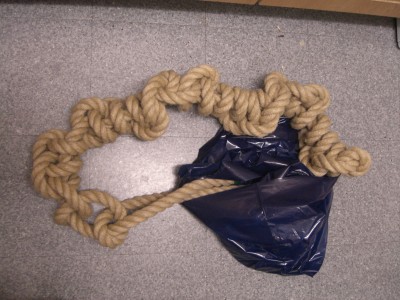
The ‘umbilical cordish’ look of the rope in a continuous knotted chain and the trailing ends suggesting the negative and positive of an electric cable, the connecting source of energy. Knotting it up in chains was inspired by rubber hobby craft that I used to do as a kid when I was growing up in Nigeria. All kids were into this craft and (we) used to make necklaces and bracelets from this rubber craft. In this project, it’s just another textile.
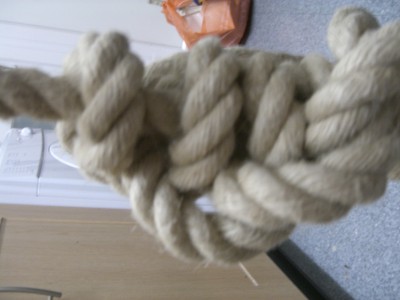

Melted candle wax which i would be using to coat the rope with a view to making a mold and then casting it.
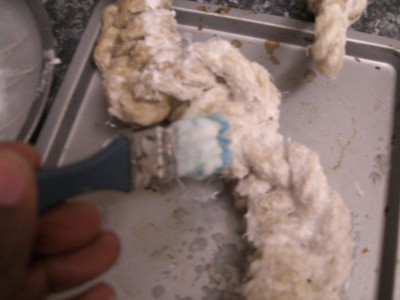
Wax being painted on….
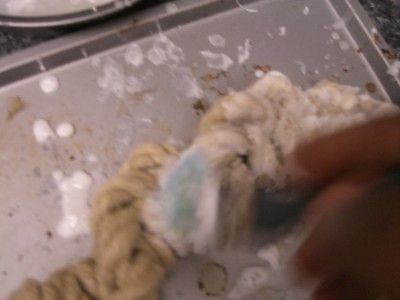


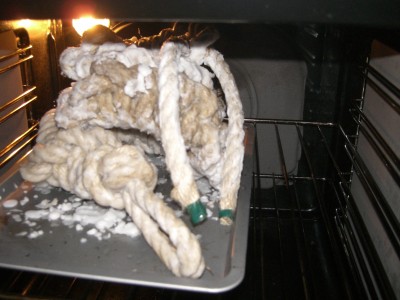
Banging it in the oven to allow the wax to permeate the knotted rope….

Aftermath of heating it in the oven….

Found object …the skeleton of an umbrella that I’m thinking of using in the sculpture…
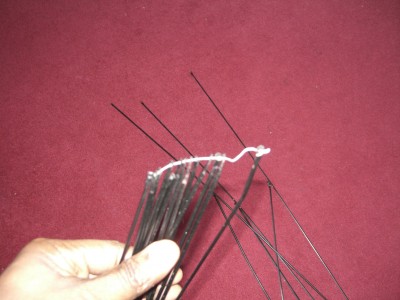
Dismantling the umbrella skeleton.
The next images that follow are the making of a face mold using plaster strips…here is an array of the materials used…
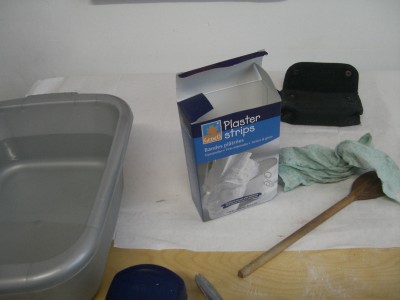


Below is the face molding process….
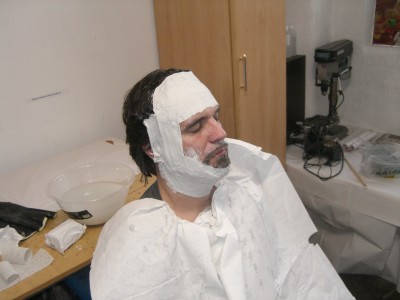
The models face is protected with vaseline and his clothing protected with protective paper.
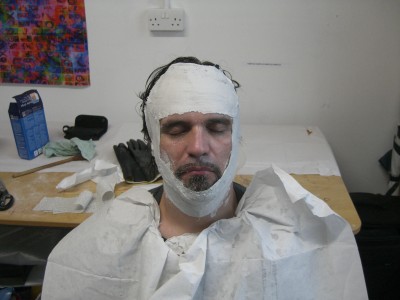
The eyes and the nose are covered in plaster strips last….
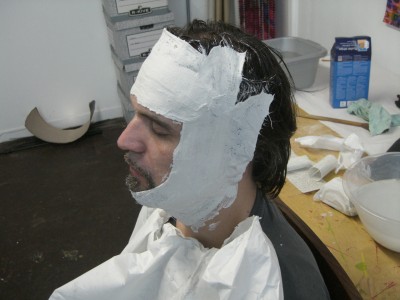
Side view….

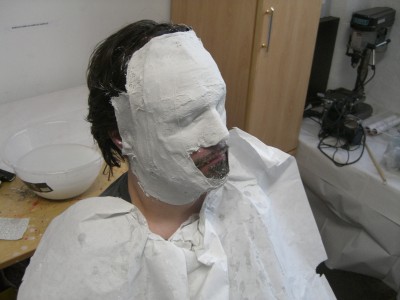
Looking mummified…
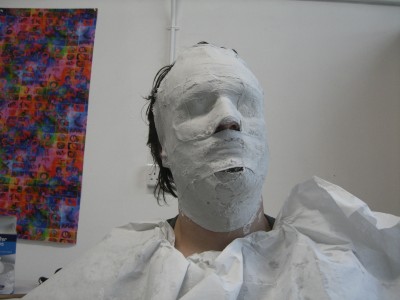



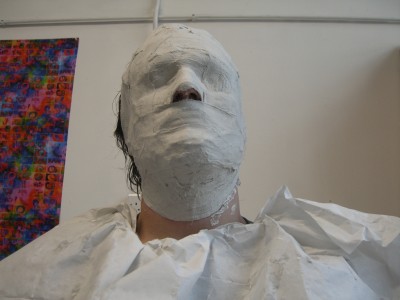
The nostrils were left untouched to avoid suffocation….

The result of the face cast and propping it up with a post and knotted rope to see the effect of it…
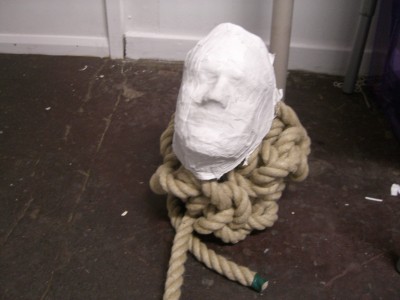

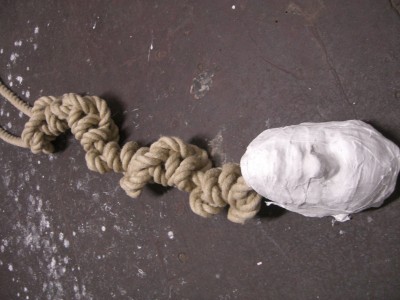
Trying to see what it would look like with the rope hanging from the head down.
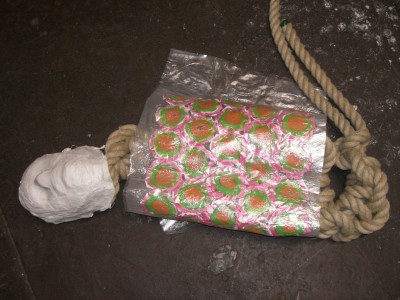
Introducing my ‘nothing’ textile to see what it would look like if i gave it a torso…

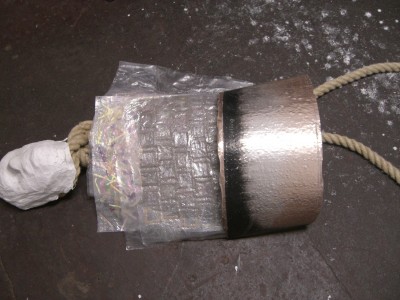
Also introducing another found object…
I decided to cast a bust to add to my sculptural piece, but I still don’t know what form or shape it is going to take, so it’s a bit like gropping in the dark really. All I know right now is that I want the sculpture to be the bust of a man and the rest of it might be made of rope or the cast of it. It’s a journey which I am not yet sure where it’s going to end. Below is the molding of the upper part of a torso that I would be adding to the rest of the piece.
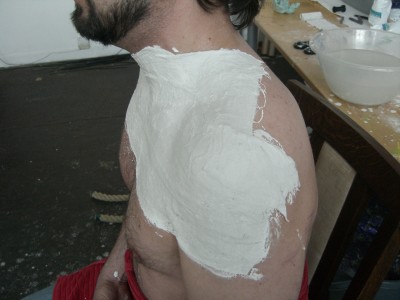

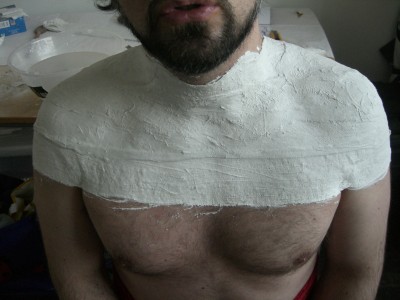
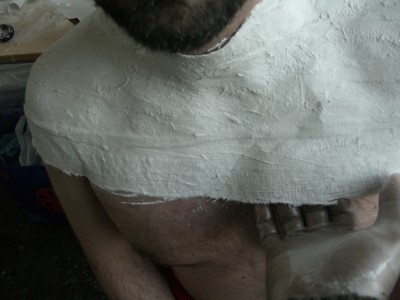
After leaving the bandage strips to dry, I now gently prise it off the model being very careful not to crush it. i found that the layers were too thin and had to add additional layers to strengthen it. Maintaining the forms is very crucial for the successful casting of the bust.
The next step was to do the back after primming it with vaseline to protect the model’s skin and also to aid the easy removal of the mold.

With the use of a felt pen, I have marked the skin to guide me on how far the plaster mold will go. You can just about make out the faint lines on the model’s back. The vaseline was applied up to that limit.

Work in progress….

Waiting for it to dry out…….

Here are both molds (back and front) all dried out now. I have matched them up to see how well they would enmesh together and I’m quite happy with the results.
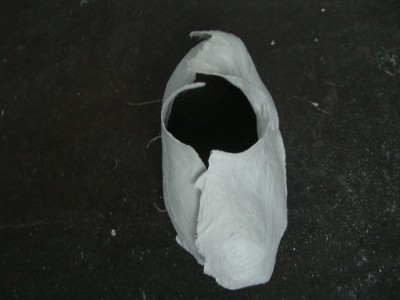
The next stage now would be to make a cast using the molds. I still have to decide if i want to cast in resin, sillicon rubber or some other material.
In preparation for casting, the molds need to be sealed and for that purpose i am using varnish. Several coats should do the trick!
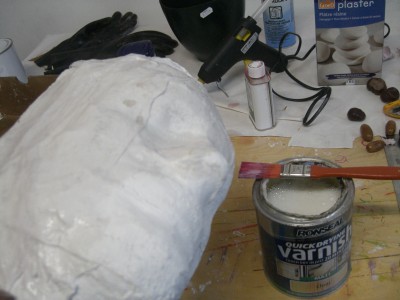

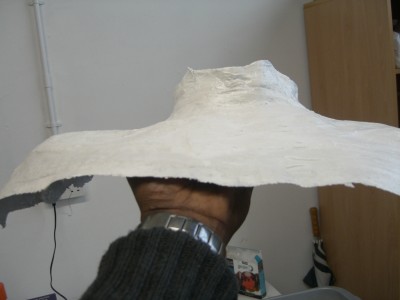
All molds have been sealed and are ready for casting!
As a continuation of my molding and casting experiment, I have used ‘found’ gloves as a mold to cast hands. Unfortunately, The fingers snapped while I was trying to take the gloves off the cast. This is not a problem as I can always stick them back on with UHU glue. The casts will still serve their purpose. Also, the cast has set with some indents in the fingers where I have placed it in a deep container and waited for the first one to set as I was doing the other hand before the plaster of paris mix got to set. But this is no problem either as it can be remedied.
Below are the images of the process……
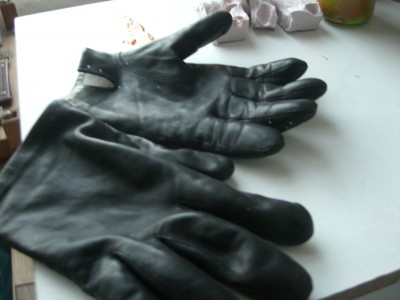
Found gloves…
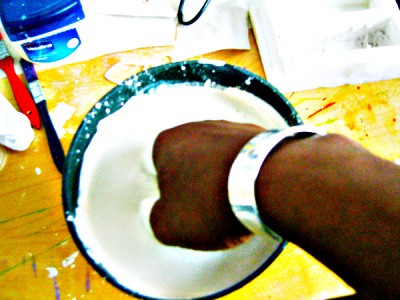
Preparing the plaster mix…..
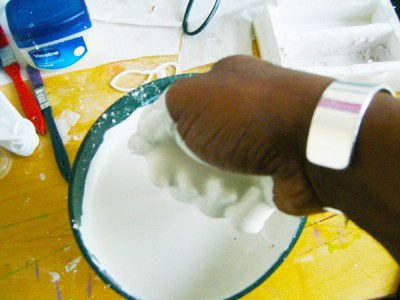
Making sure there are no lumps and getting the right consistency….
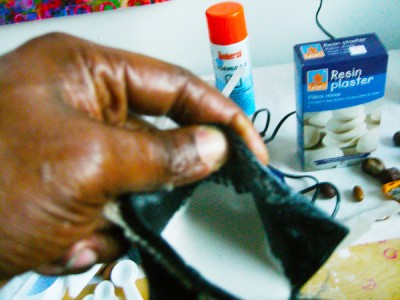
Filled up one of the gloves…

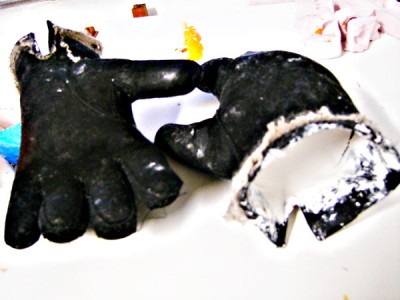
Laid it down as the chemical reaction kicked in and it starts to harden – To get it to this stage, I had to stand it in a deep container whilst waiting for it to solidify –

The first complete hand divested of it’s glove mold….
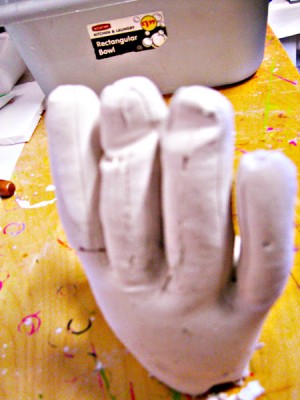

The second hand – fingerless as they snapped while trying to take the mold off….


Below: The tattered gloves that had to be cut and ripped in order to free the cast…
![]()
It’s a shame because I wanted to see if i could cast in silicone rubber with them…but the plaster casts will have to do for now.
Below are images that are a spin-off from my ‘nothing textiles’ which was developed as part of my sustainability design concept to do with encasulating materials in plastic film.
The idea is to use this new material as the torso of my figurative sculpture. Hidden in the coils of wool and embroidery thread are the text: “Lonely, sad faces”, “Life is a bitch then u die”, “Love, Hate”, “Dubious Sex”.
The endless coils is to carry on emphasising the interconnection between all humans, through our actions and thoughts, the twist and turns in our daily lives, the last curve when going through hardship, hidden thoughts and masks that we all wear to hide our real thoughts – some could be sinister – which is also why the strings are in coils to symbolize worms as in the idiomatic expression ‘can of worms’. One may never know what one may find if we could read each others thoughts.
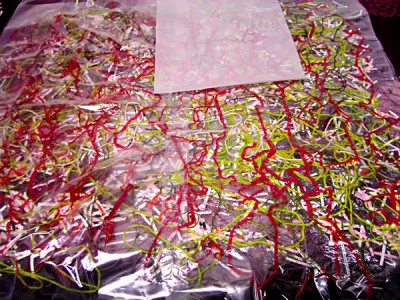
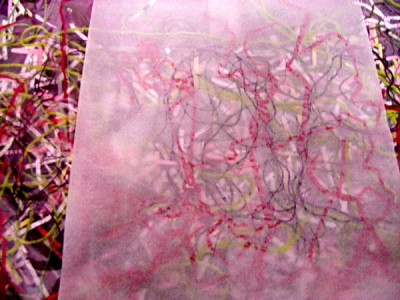
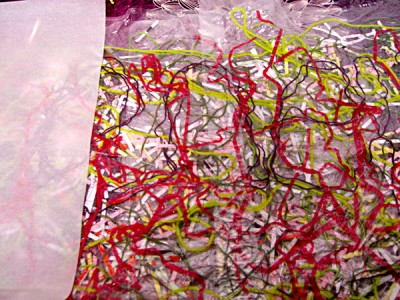


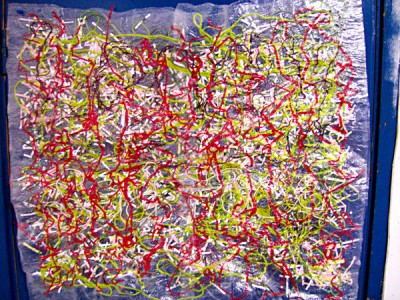
This concept I believe could go very far and has the potential of many great spin-offs.
In continuation of my 3 dimensional project, I have had to do a mould of my head because the first one I did was transfered to someone else in an oblique strategy, so it’s no longer in my possession. Besides, I have a clearer picture now of how I want to go about the work and what the end result should be like.
I figured that because the work is about me, that it follows that the face has to be mine also otherwise it would be too abstract. To give the work more impetus there has to be elements of me and if i want to make the rest of it abstract that would be alright to do so.
Below are the new moulds that I have made:
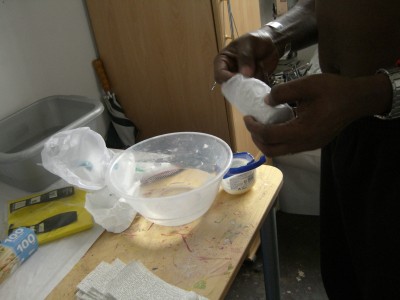
Fig.70. Getting the materials prepared for my volunteer to start sticking the plaster on my face.
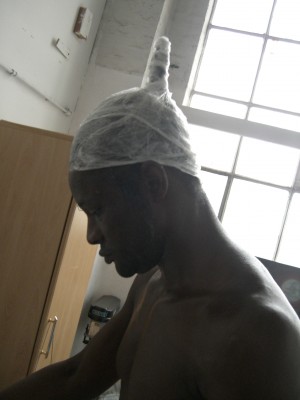
Fig.71. I already had my hair protected with clingfilm.
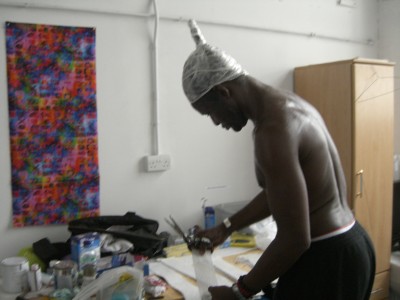
Fig.72. Cutting the plaster strips to size fo easy application.

Fig.73. The plaster has been started from the back of the head.
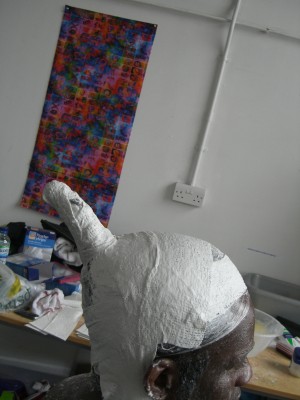
Fig.74. The side view….
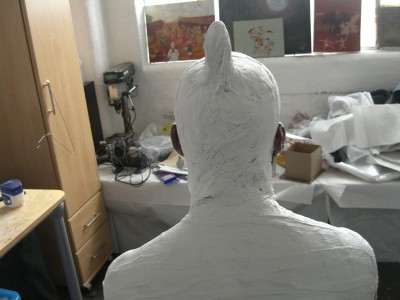
Fig. 75. The whole of my head, neck and back was covered on my instructions just slightly down the back, far enough to form a bust.

Fig.76. My shoulders are drapped in plaster.

Fig.77. By now, I am mummified.
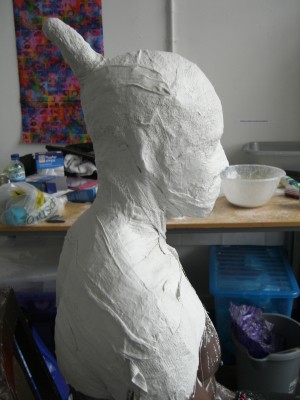
Fig.78. Side view. The hair was deliberately packed in a bunch and elongated to mimic the Nigerian Ife mask called “The Olokun” which is a very popular artifact.
The problem now arises how to disengage from my entombment. I Instructed my helper to cut through it with a pair of scissors before it gets too hard.


Fig.80. There is a small aperture left so that I can breathe.


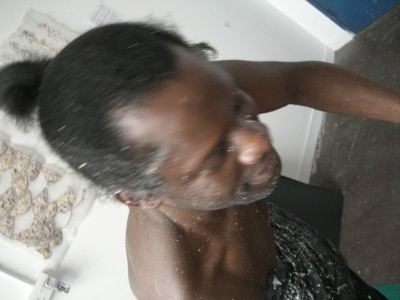
Fig.84. After I had been cut loose from the mould.
I instructed him to cut away the plaster mould from around the shoulder and work the scissors up to the neck and then dehind the ears because I didn’t want the cast features to be damaged in the process.
Here are the results:
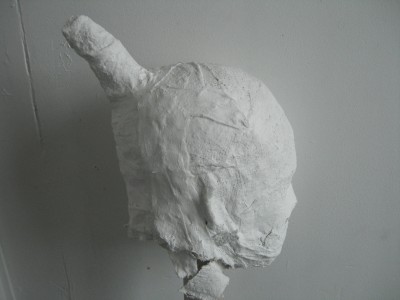
Fig.85.
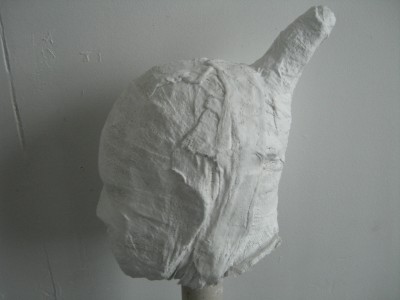
Fig.86.

Fig.87. The interior of the mould…..
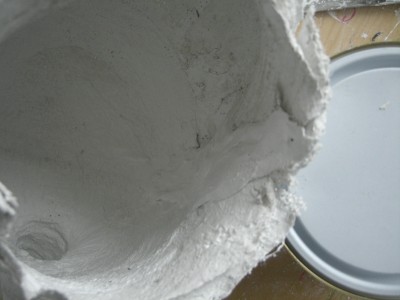

Fig.89. Showing where the laceration occurred.
Afterwards, I had to patch places that displayed signs of weakness using some more plaster strips to do this as seen below.


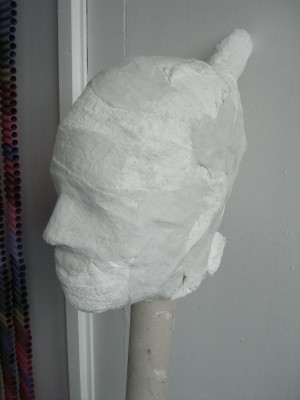

Fig.93. The right side of the head also indicating patchwork.
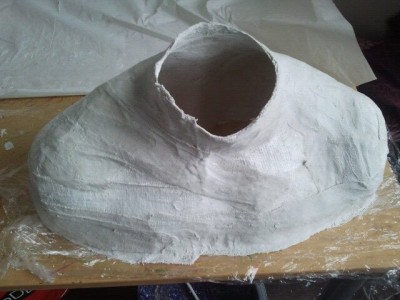
Fig.94. The Patched up bust ready for casting. I have given it an even base where it had jagged edges and could not sit properly. All I have to do now is give it a flat bottom so that the cast material can sit in it.
Both moulds are designed as waste moulds. The intention is to make rubber
moulds or wax moulds from them which will now give me the final cast impression. They will be done as seperate casts and then joined together to make the complete piece.
According to Nick Brooks, Mould making and casting,(pg.23) a life mould such as the one I have done here “are usually used to create a one-off plaster casting (the mould is destroyed in the process of removing the cast from the mould) that can be used to remould. from if multiple castings in different materials is required.
The mould will require a release agent depending on what material I will be casting in. If I use plastic which I intend to do as a casting material, then I will need a release agent, the same goes for plaster and wax, silicone rubber, polyester resin and fibreglass.
The use of waste moulds is the most economical and quicker way of mouldmaking. Brooks recommends creating a plaster mould around a soft pattern material, remove the soft pattern and fill the mould with durable casting material, then chip away the mould to remove the cast.
However, I have done my one-piece mould as a unit rather than in various parts which goes against the grain on the principles of mouldmaking. The theory is that I can fill up the mould with my casting material and then destroy it and reveal my cast as one piece. This in my opinion will be quicker than doing them in different parts which I believe would be time consuming.
My options for casting are in clay slip, wax and silicone rubber. But I want to use whichever method is going to be cheap for me to administer without spending a fortune on materials.
Step by step method:
1. Nick Brooks recommends that one creates a wall of clay around the foot of the pattern to keep the plaster in when it’s applied. A height of 30mm is ideal and the distance of 30mm from the foot of the original.
2. The modelling board surface should be treated with a release agent between the inside of the wall and the original so that the material will not stick
3. If using plaster, apply the first plaster layer of the mould which should be mixed to the consistency of double cream with added colour to tint it slightly. One can use any water-based pigment like poster colour and this will act as the warning coat when chipping off the mould from the cast. This first layer should be applied calculatedly and with extreme care as it is the layer that will register the details of the pattern and become the casting surface of the mould.
A soft brush is ideal for this process as its easy to control. The first layer should be applied evenly to a depth of approximately 2-5mm depending on any undercutting on the pattern. Areas that require deep undercutting the plaster layer should be blown directly after application as this will force the plaster into the undercut and makes sure that the plaster completely covers the entire surface of the pattern. Leave to dry until firm to the touch, but not to dry completely. This is necessary in order to get a good lamination between layers.
4. Add more layers batch by batch until a mould thickness of 18mm is achieved. For bigger moulds, reinforce with scrim or fibreglass, but it’s worth noting that chipping away a waste mould would be more difficult as a result of the reinforcement.
5. When the desired thickness is achieved, allow the mould to set thoroughly. This will take about 2-3 hours and the pattern can then be removed.
The above description is what I have used to create the above moulds. Although I did not follow this to the letter, but so far I have managed to achieve a hard shell mould cast. And the next step is to determine what material I want to cast in and just get the job done as meticulously as possible.
The next objects of focus now are the knotted ropes that are going to be introduced to my sculptural piece.
This is very tricky because of the crevises and loops that are a result of the knots. In order to solve this problem, I have tried using wax which was used to laminate the rope specimen but was unable to proceed with it because the loops and deep crevises were still there.
However, I have deviced a clever way of removing this problem by wrapping the rope in clingfilm. This still had a problem as the clingfilm will not adhere properly to the rope because the hessian rope is fibrous and dry. Then I decided to use 3M mounting spray as this has the capacity to allow adherence temporarily and gives lee-way for adjustments if it was needed. I want the forms of the knots to register including the fibre of the rope, so spraying it with this adhesive would make the clingfilm adhere to the rope without it peeling off when it is moved. and give a quite taunt adherence. In order to further reinforce this, I have also applied heat with the help of a hand-held hair dryer. This expands the polythelene, and with further coaxing by holding and applying pressure to it, sticks with a very taunt and flush adherence to the rope after it cools. Also, it has helped eliminate the problem of the loops and hollows from the knots by creating a barrier so that when I make a mould from silicone rubber, it will come off easily without forming any links that would make it impossible to seperate the mould.
Below are pictures of the process:
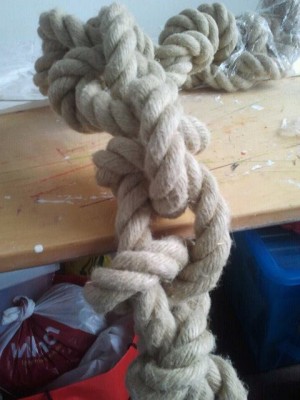
Fig.95. Hessian knotted rope partially covered in clingfilm.

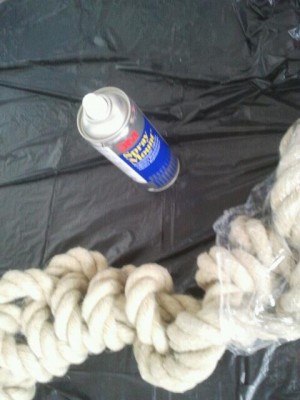
Fig.97. 3M spray mount adhesive.
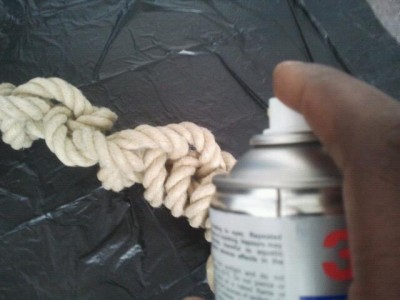

Fig.99. Wrapping up the rope in clingfilm which adhered better due to the adhesive spray
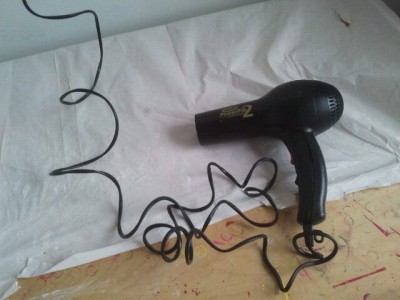
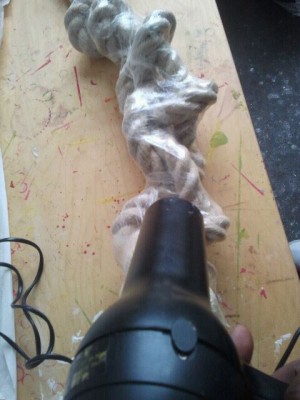 Fig.101. Applying the heat.
Fig.101. Applying the heat.
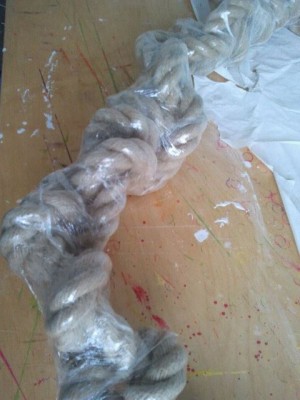
Fig.102-105. The result.
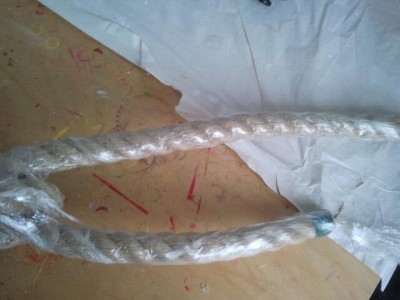
Fig.103.
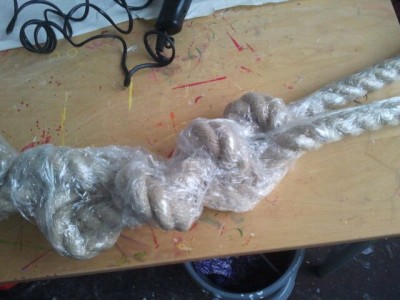
Fig.104.



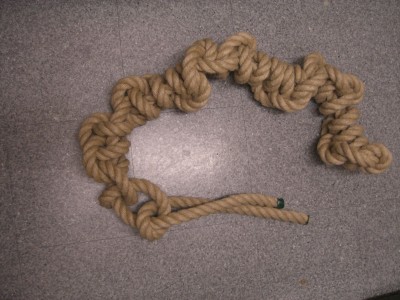

I have noticed you don’t monetize adeysapphire.com, don’t waste your
traffic, you can earn extra cash every month
with new monetization method. This is the best adsense alternative for any type of website (they approve all sites), for more details simply
search in gooogle: murgrabia’s tools